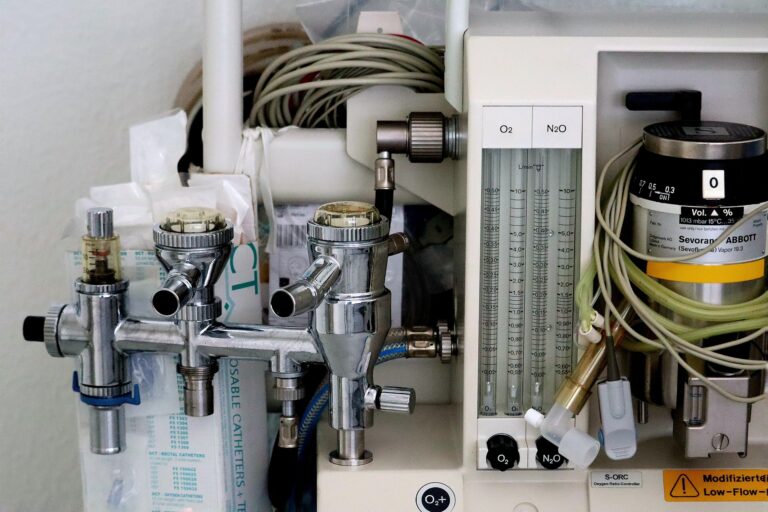Food Safety Guidelines on Equipments and Maintenance
Food Safety Guidelines on equipment’s and Maintenance are extremely important program for food manufacturing. Effective maintenance of equipment is necessary to ensure proper functioning.
Regular inspections, preventive maintenance, and proper cleaning can extend the equipment’s lifespan and reduce the risk of malfunction. Food Safety Guidelines on Equipments and Maintenance if implemented properly at food manufacturing sites this can prevent a lot of food safety risks.
Note that engineering work can pose a risk of contamination to the food product. so there must be some harmonized, aligned approach on how to do equipment maintenance and how we can prevent any food contamination due to equipment Maintenance.

Equipment Maintenance- Food Manufacturing Facility Must Do:
Followings are some of the mandatory actions every food production facility must follow.
- Every food processing facility must have a plan/procedure in place for temporary repairs.
- Any maintenance performed in the production area must be evaluated for the potential risk of contamination.
- Maintenance in product areas must be scheduled to allow for sanitation and inspection before resuming production.
- All cleaning Tools must be kept clean and free of food debris, and toolboxes should be used to transport and use small parts and equipment.
- These toolboxes must be kept clean and locked when not in use.
- Food-grade lubricants must be used on all equipment that comes into contact with food, and waste oil products must be disposed of in a traceable and safe manner to prevent re-entry into the food chain.
- All food equipment parts must be stored in a clean, organized and elevated manner, easily accessible for engineering maintenance, cleaning and inspection.
Equipment Maintenance- Food Manufacturing Facility Must Do:
- No metal components of any machinery or equipment should come into contact with, vibrate against, or scrape against any other metal or plastic surfaces.
- No cutting, welding, or grinding should be performed in food product zones while food production is taking place.
- Maintenance work in the production area should not be carried out if there is any risk to the product or if it has not been approved by the site Food Safety and Health & Safety team.
- Wooden tools are prohibited in the factory and in the engineer’s workshop.
- Engineering team or maintenance technicians should not use excessive amounts of grease and lubricants in the product zone.
- Temporary repairs on equipments being used for food product manufacturing are not allowed.
Equipment Maintenance guidelines for contractors or 3rd party workers:
- All contractors must comply with the site’s quality and food safety standards, including the use of appropriate workwear, shoes, and personal protective equipment
- Site quality & food safety team must evaluate all the maintenance task for potential food safety hazards before being carried out by contractors or any 3rd party workers.
- Site team must Inspect all contract work and areas prior to the start of food manufacturing, as part of the inspection procedures.
- Contractors must be closely monitored by a designated manager or employee.
Contractors or any 3rd party working team must receive a comprehensive induction on the site safety and quality & food safety procedures before starting the work.
Equipment Maintenance guidelines on Temporary Repair in food processing:
Temporary repair inside food processing area with following Material can be acceptable with proper record and removal timelines.
- Metal detectable cable tie
- Reinforced visible tape
- Signed and dated logs
- Site team must perform a weekly inspection to check that all temporary repairs which are their in the food manufacturing facility are intact and in good order.
Temporary repair inside food processing area with following Material are totally unacceptable and must not be used.
- Wood
- Sting
- Cardboard material
- Clear Tape
- No temporary repair above product areas regardless of material type
Lubricant Guidelines in food processing:
- Each Food Manufacturing site must prevent, detect, and eliminate lubrication leaks and excessive lubrication.
- Catch pans must be used in areas where oil sources are located above open food or food contact surfaces.
- Only lubricants that are safe for food contact (Food Grade) can be used on any equipment inside foo manufacturing facility.
- Food-grade and non-food-grade lubricants must be clearly labeled and stored separately.
Food Safety Guidelines on Materials in food processing:
- All materials used in production equipment must be durable and able to be easily cleaned.
- Materials that are absorbent, non-durable, such as wood or cloth must not be used in the product area.
- Materials that come into contact with food must be non-toxic and non-tainting, and must not contain any harmful chemicals that could potentially migrate into the food.
- Stainless steel should be utilized as much as possible for equipment, fittings, and fixtures.
- Use of Glass and hard plastics materials should be avoided in production areas to prevent possible breakage as this could lead a serious food safety issues.




